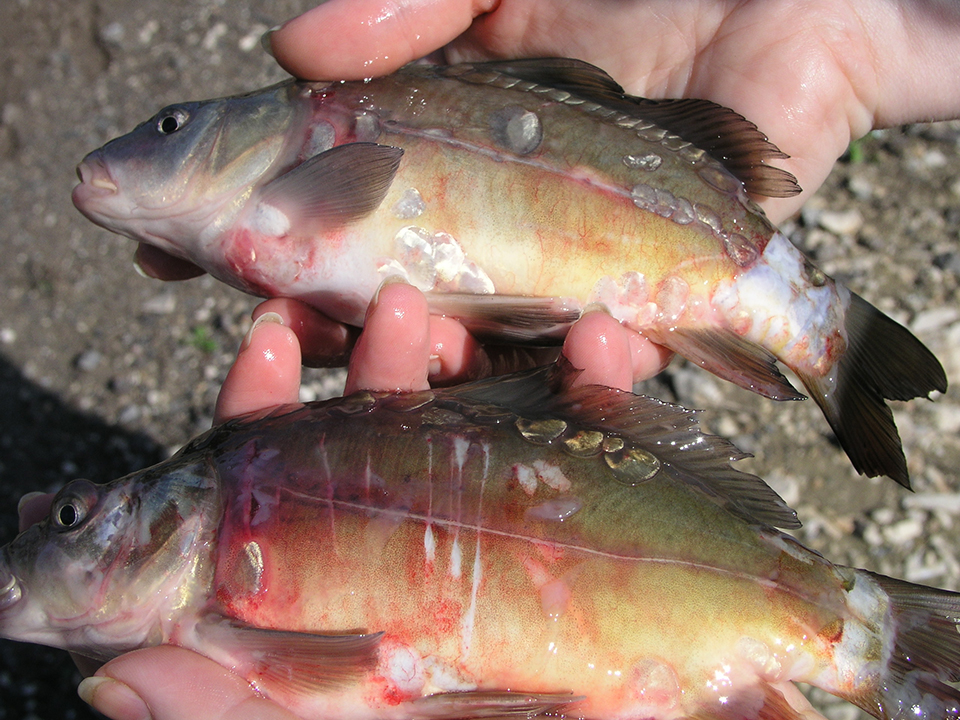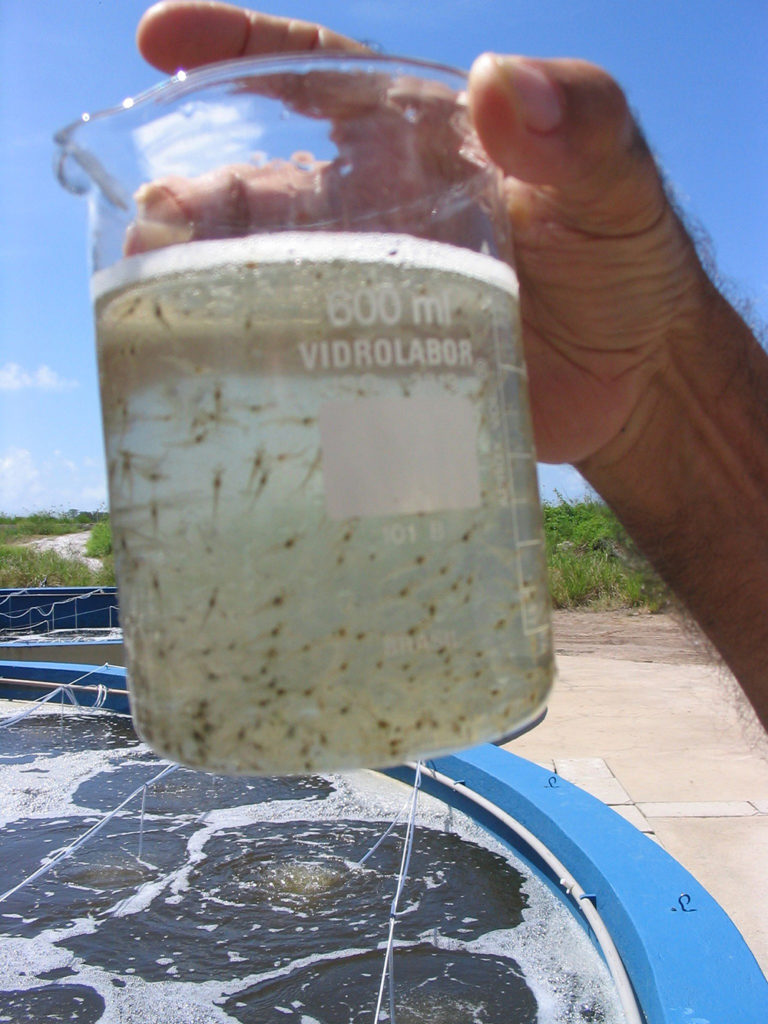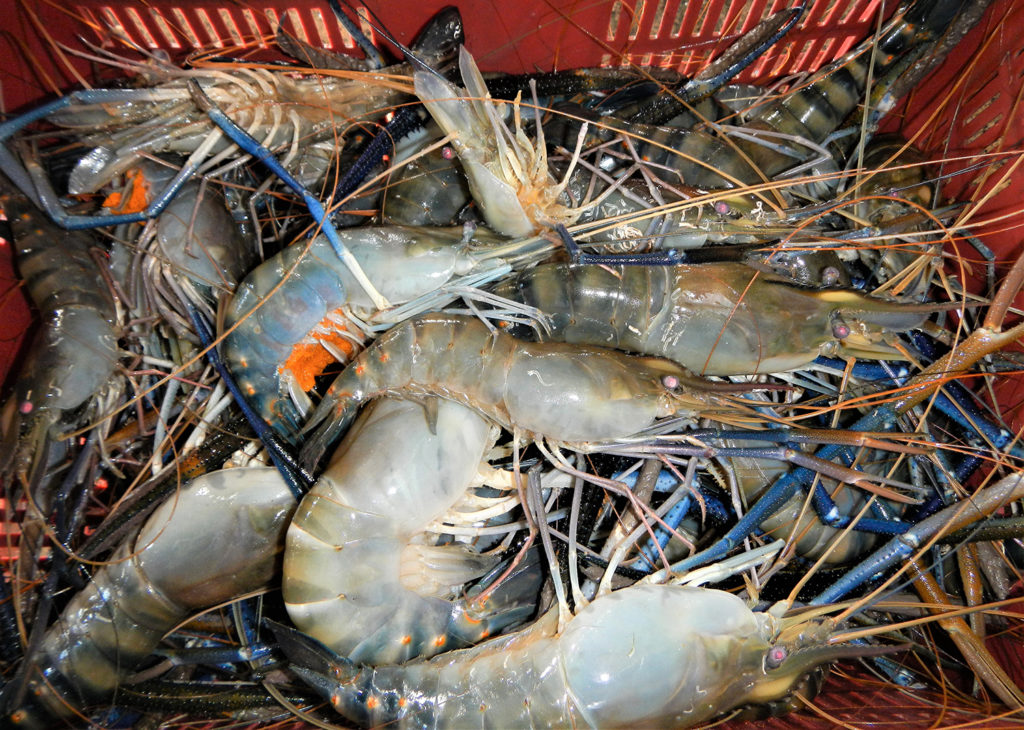Get confirmation by in situ hybridization and/or RT-PCR
During the past five or six years, several reports on the presence of Yellow Head Virus (YHV) originated from the United States and other countries in the Americas. In some of the early reports, diagnosis of the disease was based on histological analysis and the demonstration of lesions considered to be “typical.”
YHV and lymphoid necrosis
Severe necrosis (localized death of cells or tissues through injury or disease) of the lymphoid organ is perhaps one of the most conspicuous and “typical” lesions caused by YHV. Shrimp with acute YHV infection display a generalized multifocal to diffuse severe necrosis, with prominent nuclear pyknosis (condensation of nuclear material) and karyorrhexis (degenerative cellular fragmentation), accompanied by extensive degenerative changes of this organ. This necrosis destroys the parenchymal cells (sheath cells) and fibrous connective tissue cells of the lymphoid organ. Advanced necrosis results in an increased number of blood cells and an abundance of necrotic debris, with the remnants of fragmented nuclei giving a peppered appearance to the lymphoid organ. For several years after YHV was first discovered, necrosis of this type resulted in diagnosis of YHV disease.
WSSV and lymphoid necrosis
White Spot Syndrome Virus (WSSV) and YHV infect the same tissues and organs of ectodermal and mesodermal origin, including the lymphoid organ. The ectoderm is the outer germ layer, while the mesoderm is the middle germ layer in an embryo.
In some instances, penaeid shrimp with severe WSSV infection also exhibit marked lymphoid organ necrosis almost identical to that caused by YHV. One of the differences is that with WSSV infection, characteristic intranuclear inclusion bodies can be observed in the sheath cells and supporting connective tissue of the lymphoid organ. Such intranuclear inclusions do not occur when only YHV is the infecting agent.
Dual infection
Since dual infection by WSSV and YHV is possible, the question arises as to whether the severe lymphoid organ necrosis observed in some severe WSSV infections can be the result of YHV. To test this hypothesis, eight representative specimens of WSSV-infected shrimp with severe lymphoid necrosis (determined by H&E histology) were selected from archival material and cases submitted for a second opinion to the Department of Veterinary Science and Microbiology at the University of Arizona in Tucson, Arizona, USA.
The submitted specimens originated from several countries including Mexico, Honduras, and Ecuador, while other specimens were from experimental infections in which only WSSV was used as the inoculum. In each instance, three consecutive sections from each specimen were subjected to H&E conventional histology, in situ hybridization with the YHV gene probe, and in situ hybridization with the WSSV gene probes, respectively.
In situ hybridization results
No reaction to the YHV probe was observed within the lymphoid organ, or in any other tissue, of the eight specimens tested. In contrast, a positive reaction to the WSSV probes was observed in all of the shrimp examined (Table 1).
Pantoja, Summary of in situ hybridization results, Table 1
| Test ID# | Species | Origin | WSSV | YHV | Other |
|---|
Test ID# | Species | Origin | WSSV | YHV | Other |
|---|---|---|---|---|---|
| 96-183 | P. setiferus | Bioassay | + (LO) | NR | – |
| 99-017 | P. stylirostris | Honduras | + (LO) | NR | TSV + (LO) |
| 99-307 | P. vannamei | Honduras | + (LO) | NR | – |
| 99-326 | P. stylirostris | Mexico | + (LO) | NR | TSV + (LO) |
| 00-058 | P. vannamei | Bioassay | + (LO) | NR | – |
| 00-204 | P. vannamei | Ecuador | + (LO) | NR | – |
| 00-294 | P. stylirostris | Honduras | + (LO) | NR | – |
| 00-359 | P. stylirostris | Mexico | + (LO) | NR | – |
YHV = Yellow Head Virus NR = No reaction
TSV = Taura Syndrome Virus
Table 1. Summary of in situ hybridization results.
Two of the eight specimens examined also had been previously subjected to in situ hybridization with the gene probe for detection of Taura Syndrome Virus (TSV), and a positive reaction was observed within the lymphoid organ. This reaction to the TSV probe confirmed the integrity of the viral RNA and also served as an internal control for the validity of the test in detecting possible infection by other RNA viruses.
Conclusion
Since this experiment demonstrated that severe lymphoid organ necrosis can also appear as a result of severe WSSV infection, it is recommended not to use this type of lesion as the sole feature to diagnose YHV disease. In cases where YHV infection is suspected after conventional H&E analysis, additional confirmation by other means – such as in situ hybridization and/or RT-PCR – should be carried out.
(Editor’s Note: This article was originally published in the June 2001 print edition of the Global Aquaculture Advocate.)
Now that you've reached the end of the article ...
… please consider supporting GSA’s mission to advance responsible seafood practices through education, advocacy and third-party assurances. The Advocate aims to document the evolution of responsible seafood practices and share the expansive knowledge of our vast network of contributors.
By becoming a Global Seafood Alliance member, you’re ensuring that all of the pre-competitive work we do through member benefits, resources and events can continue. Individual membership costs just $50 a year.
Not a GSA member? Join us.
Authors
-
Carlos R. Pantoja, Ph.D.
Department of Veterinary Science and Microbiology
University of Arizona
Tucson, Arizona, USA -

Donald V. Lightner, Ph.D.
Department of Veterinary Science and Microbiology
University of Arizona
Tucson, Arizona, USA
Tagged With
Related Posts

Health & Welfare
Candidate gene markers for selective breeding of CyHV-3-resistant carp, koi
Common carp and koi producers around the world have suffered substantial financial losses due to a contagious disease caused by cyprinid herpesvirus-3.

Responsibility
A look at various intensive shrimp farming systems in Asia
The impact of diseases led some Asian shrimp farming countries to develop biofloc and recirculation aquaculture system (RAS) production technologies. Treating incoming water for culture operations and wastewater treatment are biosecurity measures for disease prevention and control.

Health & Welfare
A study of Zoea-2 Syndrome in hatcheries in India, part 2
Indian shrimp hatcheries have experienced larval mortality in the zoea-2 stage, with molt deterioration and resulting in heavy mortality. Authors considered biotic and abiotic factors. Part 2 describes results of their study.

Health & Welfare
First report and description of Decapod Iridescent Virus-1 in giant freshwater prawns
Study reports and describes a natural occurrence of new virus, Decapod Iridescent Virus 1 (DIV1), in the giant freshwater prawn (Macrobrachium rosenbergii).


